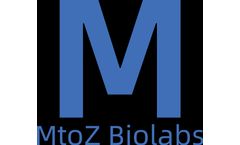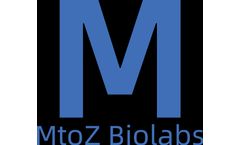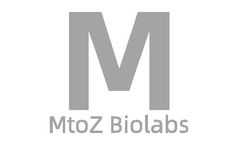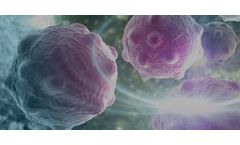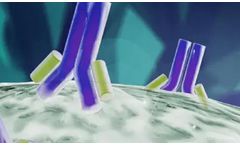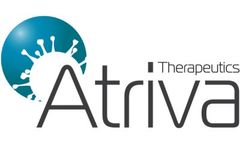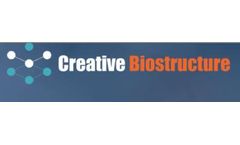Refine by
Cytometry Articles & Analysis
32 articles found
l Validation: Products validated for ELISA, flow cytometry, or ligand-binding kinetics provide higher confidence in reproducibility. ...
Stem cell surface markers such as SSEA-3, SSEA-4, TRA-1-60, and TRA-1-81 are routinely analyzed via flow cytometry or immunocytochemistry. Additionally, the expression levels of core pluripotency transcription factors, including Oct4, Nanog, and Sox2, are quantified using techniques like quantitative PCR and Western blotting. ...
These include: ELISA (Enzyme-Linked Immunosorbent Assay): This is widely used to assess antibody binding to specific antigens present in different tissues. Flow Cytometry: This technique allows for the analysis of immune cell populations and their reactivity to specific antigens, providing insights into cross-reactive responses. ...
This is typically performed using techniques like flow cytometry and radiolabeled binding assays. 3. Tumor Inhibition Potency Analysis ServiceOnce binding characteristics are established, the next step is to assess tumor inhibition potency. ...
Cell Culture Assays: These assays are designed to evaluate cell viability, proliferation rates, and functionality. Flow Cytometry: This technology is employed to analyze cell populations, allowing the identification of surface markers and the assessment of cell purity. ...
Key techniques include multi-omics profiling, immune checkpoint blockers (ICBs), RNA-sequencing (RNA-Seq), single-cell analysis, imaging mass cytometry (IMC), and multiplexed ion beam imaging (MIBI). Particularly noteworthy are Cell Analysis and Omics Analysis, which are transforming how brain tumors are diagnosed, monitored, and treated. ...
It provides information on the hydrodynamic radius and polydispersity index, which are critical parameters for ensuring the stability and homogeneity of ADC formulations. Flow Cytometry Flow cytometry allows for the assessment of ADC binding to target cells and the subsequent delivery of the cytotoxic payload. ...
To find antibodies that can be used as therapeutic antibodies or effectively applied in ELISA, flow cytometry, and blocking assays, we urgently need to design a peptide that can accurately mimic the structure of natural proteins.In the design process, considerations need to be made for the known structure, predicted structure of the target antigen, and practical applications. ...
Linear epitopes are suitable for use in protein blotting (Western Blot) and paraffin-embedded immunohistochemistry experiments, and native epitopes are more suitable for immunoprecipitation (IP), cryosection immunohistology, flow cytometry, and enzyme-linked immunosorbent assay (ELISA). In addition, those antibodies that can identify formalin-resistant epitopes and are used for ...
Experimental VerificationExperimental methods (such as ELISA, flow cytometry, etc.) are used to verify the results of sequence analysis, as well as the impact of constant region changes on antibody function.Analysis of Antibody Constant Region ...
This assay labels the fragmented DNA with a fluorescent probe, allowing visualization under a microscope or by flow cytometry. Caspase Assay: Caspases are a family of cysteine proteases central to the execution of apoptosis. ...
Cell penetration experiments using flow cytometry confirmed the cell-selective uptake properties of the LipoSM-PROTAC platform, offering a new solution to mitigate adverse reactions in normal tissues or cells. ...
Its scientists can utilize high-content imaging, nanoparticle imaging, imaging flow cytometry, time-lapse imaging, and other techniques to image cell structure, cell migration, cell proliferation, pathogen infection mechanisms, and interactions between protein ...
Flow cytometry (FC) is an important tool for analyzing complex pathways and responses of single cells, which can track cell phenotypes and functions in multiple dimensions. ...
The CC50 value was determined using the “Sigmoidal, 4PL, X is log(concentration)” equation in GraphPad Prism. 2.9 Flow cytometry analysis For flow cytometry analysis, 6 × 105 Caco-2 cells were seeded per well in six-well plates (Greiner Bio-One, Kremsmünster, Austria) and incubated for 24 h at 37°C, 5% CO2. ...
Nano-flow cytometry is a revolutionary technology that has the potential to transform early disease detection and diagnosis. ...
Contexte Myasthenia gravis (MG) is an autoimmune disease caused by the presence of antibodies directed against components of the muscle membrane located at the neuromuscular junction. In the majority of cases, these are autoantibodies directed against the acetylcholine receptor (AChR). The origin of the autoimmune response is not known, but thymic abnormalities and defective regulation of the ...
Manual analysis of large volumes of highly complex cytometry and other single cell data such as that generated in clinical trials is not only slow, but is biased in that investigators can generally only identify cell populations which they are specifically looking for. By performing simulation studies comparing FAUST with existing data analysis in 7 cytometry ...
Prilic, Mair, and Erikson employed novel methods, which included high parameter flow cytometry and Ozette’s foundational technology–full annotation using shape-constrained trees (FAUST). FAUST is a machine learning algorithm that discovers and annotates statistically relevant cellular phenotypes in an unsupervised manner. Pairing high parameter flow ...
To dig up clues in the blood, the authors used a technique called flow cytometry. Flow cytometry is a tool that rapidly analyzes the properties of individual cells as they flow through the laser. ...





